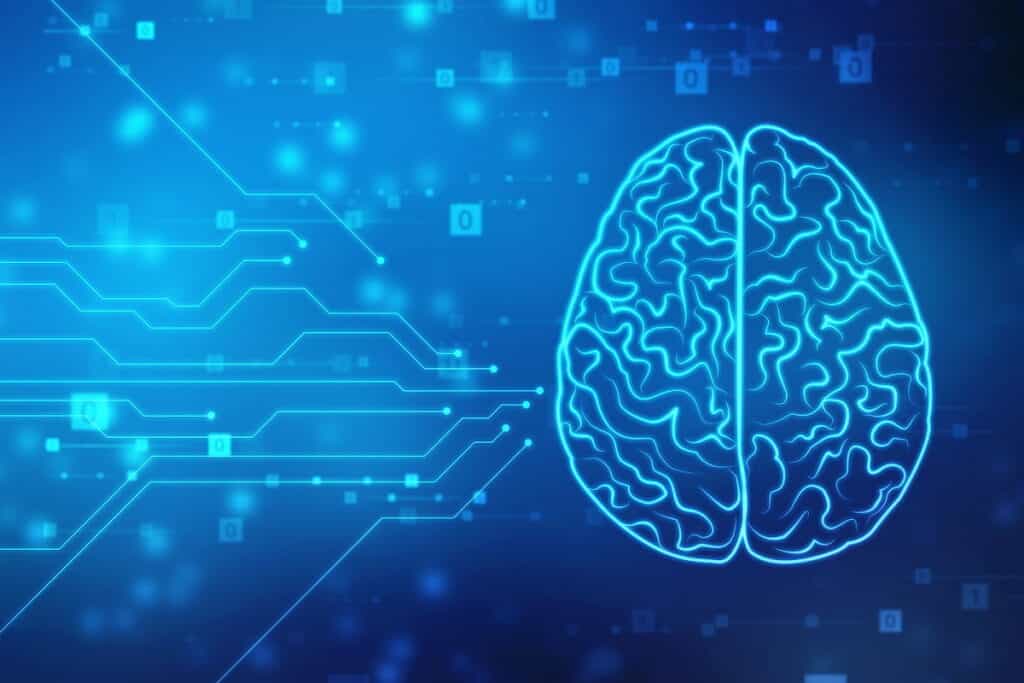Brain Computer Interface: The End of Keyboards & Mice?
Table of contents
Table of contents

It was when we tried virtual reality (VR) for the first time that we realized our method of controlling computers is likely to change. When you realize your VR headset is acting as a pointer in virtual reality, and you begin using your head like a mouse without even thinking about it, you start to grasp that there are much easier ways to control computers. Take foveated rendering (eye tracking) as an example. Soon computers will know exactly where you are looking – blink twice for double-click!
Last November 2016, we posted an article, “Brain Implants that Augment the Human Brain Using AI” where we talked about exploring the hippocampus to solve brain disorders associated with memory loss. Much work has been done by Dr. Theodore W. Berger into neurobiological issues related to the hippocampus, primarily around implants to explore signal processing of hippocampal neurons. As it turns out, the hippocampus is the storage for our short-term memory working much like the RAM does in your computer. This is the motivation behind Bryan Johnson’s $100 million investment into his brain augmentation startup Kernel.
A Brain Computer Interface (BCI) or Brain Machine Interface (BMI) has numerous definitions, but the common elements found among all the definitions are as follows:
- They come in the form of a system of hardware and software.
- The hardware system captures or acquires signals from the brain.
- The software component of the system records and analyzes these signals.
- The software translates these signals into commands and then sends them to hardware devices that execute actions for a specific purpose, like a robotic arm. It can also communicate with another system such as a VR or AR system.
If the initiatives are to be classified according to purpose (whether for research, clinical trials or investments), brain interface technology development can be grouped into the 3 following areas:
- Neurofeedback
- Device Interaction
- Brain Enhancement
Let’s take a closer look at each of these three areas.
Neurofeedback
Neurofeedback is conventionally known in psychotherapy circles as “EEG biofeedback” which is based almost exclusively on electroencephalography (no way you can say that out loud). In case you don’t sit around memorizing words like that, here’s a definition:
An electroencephalogram (EEG) is a test that detects electrical activity in your brain using small, flat metal discs (electrodes) attached to your scalp. Your brain cells communicate via electrical impulses and are active all the time, even when you’re asleep. This activity shows up as wavy lines on an EEG recording.
Since the first human EEG was recorded by Hans Berger in 1924, this discovery has become the basis for almost everything related to brain activity and brain mapping. Here’s a look at a boy wearing an EEG cap that captures the signals from his brain:

The use of digital technology has enhanced significantly in mapping the brain’s activity. It is important to note that a lot of the data on EEG was derived from the studies performed on human eye movement as it correlates with specific brain waves being emitted in specific areas of the brain. Technological advancement in the targeting system of military aircraft can be attributed to the extensive knowledge gained from these studies. Naturally, the potential for similar applications has attracted investment into this field.
Neurofeedback provides feedback to researchers and medical practitioners as to the state of mind or intensity of brain activity so specific intervention can be administered to achieve the desired result. The research and product innovations in virtual reality (VR), augmented reality (AR) and even innovative learning approaches are creating opportunities for the development of brain interfaces for neurofeedback. Remember how Affectiva can tell your emotions by looking at your face? How about a brain computer interface that reads your emotions by looking at your brain waves?
Device Interaction
Another desirable purpose of brain computer interfaces is the direct control of devices. (This is where we start rubbing our hands together gleefully). Think of this as WiFi for the brain, where we can control mobile phones, printers, and even cars with our thoughts. Testing of this technology to control lights, robotic prosthetics, and vehicles are yielding encouraging results. Although most of the studies and testing are in the medical field, the potential of these interfaces in AR and VR gaming are going to drive investments in this area.
Investments in this field are coming into companies like Neurable and ThynkWare Innovation, both of which are developing platforms for controlling everyday devices. The science of this technology is hinged on the ability of digital technology to access impulses sent by the brain to certain muscle groups for motor function. Mapping of brain activity and correlating it to certain motor functions is already helping people with disabilities or neurological disorders.
This paves the way for a specialized field of neurology called “neuroprosthesis” which is the idea of augmenting the brain with devices. Companies like MYOMO, Neuropace, BrainRobotics, and Bryan Johnson’s Kernel Co are already making some strides in this area. We’ll explore this more in a coming article on neuroprosthesis and look at some of the investment opportunities opening up.
Brain Enhancement
You probably don’t need to read much more than the deadline to realize where this is going. What’s that little Johnny? Having problems with your homework? Just put on this brain enhancement hat and you’ll be right as rain.
Brain enhancement through brain computer interfaces can be made possible by providing a platform for:
- Enhancing the brain’s capability to learn.
- Increasing intelligence and improving memory retention.
- Healing the brain by re-establishing synaptic connections.
Clinical trials conducted by a company called NeuroLutions on the application of this technology, have shown that it can trigger the creation of synaptic connections in the brain, providing medical intervention to those disabled by stroke. Stroke is ranked No. 5 as a killer in the United States, killing 130,000 out of 800,000 hit by this disabling disease costing a staggering $34 billion each year in terms of health care costs.
This technology, once it reaches the product development phase, will have an impact on people with learning disorders, educational institutions hoping to improve learning environments, and people suffering from memory loss and other neurological disorders. NeuroLutions, Rythm, Cerêve, BrainCo, InteraXon, and MindMaze are companies to watch out for in terms of investing in this space.
Conclusion
Developments in brain computer interface, BMI or BCI, will revolve around the above three purposes or a combination of these purposes. Don’t be surprised if you see a number of BCI or BMI start-ups getting into AR or VR markets even though the primary application is medical. It is both a technical and a marketing strategy. The best way to test mainstream application is in gaming. Gaming tests the logic of software and the adaptability of hardware. The financial rewards received from getting into the AR and VR markets help fund further research into the technology. This is the sort of money they’re going to be siphoning:
Are we going to see a future with no remote controls, pointers, mouse or even keyboards? Let’s hope so because our hands can only type so fast. In a coming article, we’re going to discuss 12 companies breaking ground on brain computer interface applications to get a glimpse of what investments are being made in this space. Some of these companies will blur the lines between weird brain science and applied technologies. We can barely contain our nerdy excitement.
Sign up to our newsletter to get more of our great research delivered straight to your inbox!
Nanalyze Weekly includes useful insights written by our team of underpaid MBAs, research on new disruptive technology stocks flying under the radar, and summaries of our recent research. Always 100% free.
















Made device for reading human thoughts / human mind reading machine / Brain computer interface. In particular, I have created a perfect Speech Generating Device for people with Amyotrophic Lateral Sclerosis / ALS. Assistive technology or Augmentative and alternative communication. About the problem look : Jack Gallant, Tom Mitchell and Marcel Just; John – Dylan Haynes; Andrea Stocco and Rajesh Rao, human mind reading machine. The discovery has not been published.
Syren,
You absolutely nailed the marketing on this one with the term “human mind reading machine”. We’re a site that looks at things from the perspective of an investor so we pay little attention to anything that hasn’t been verified. With that said, we’re always super intrigued by people’s inventions! When you get your discovery published or some VC backing, ping us please!
I made revolutionary discovery – first practical device for reading human thoughts or Brain Computer interface. I live in Russia and I can’t to publish my discovery!
Sorry I don’t know English. Это та проблема ,о которой в частности недавно так много говорил Facebook…
Now I can only one thing : to give a lecture in Russian and prove the truth!